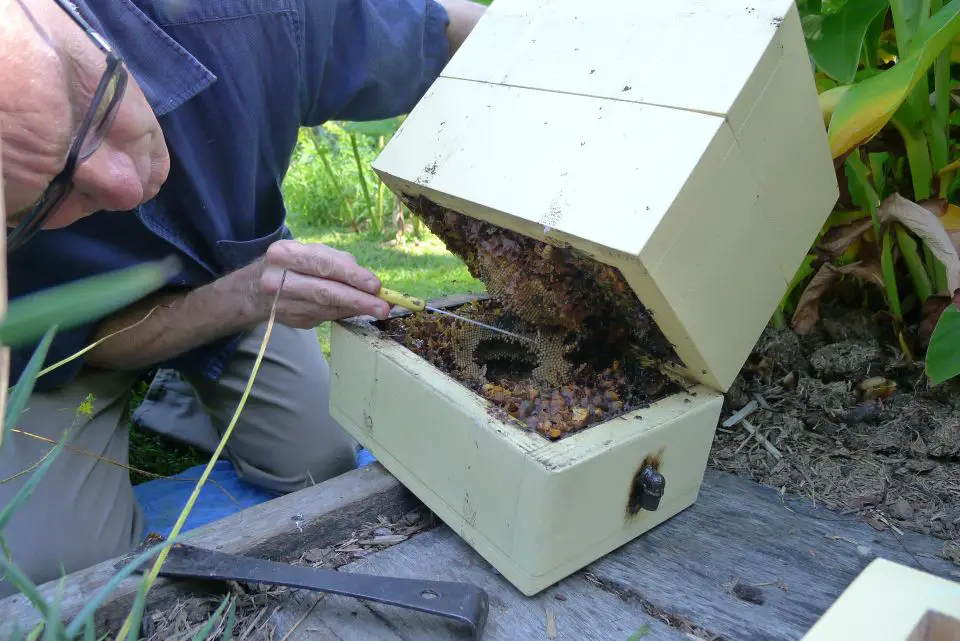The cost of the bees themselves is something that every beekeeper is aware of when they want to start a new colony. This is why beekeepers should make sure that they’ve picked the right time to split a hive before it’s too late.
Splitting is a cost-efficient way of establishing a new hive, without having to endure the costs of new bees. It’s also a way to help a fellow beekeeper start a new colony using the bees that you already have.
What is Splitting?
If you already have a healthy hive, you simply take a part of the established colony and transfer it into a new hive, creating two colonies. As a result, you’ll have two colonies with their worker bees and their own queen for the price of one.
Dividing your colonies doesn’t mean that you can get bees for free. However, you’ll have two colonies producing double the amount of honey.
What are the Benefits of Splitting a Hive?
In addition to being a smart and less expensive way to build a new colony, hive splitting has other benefits.
- You’re encouraging your bees to do more. As the bees move to the new hive, they’ll be producing and storing more food.
- You’ll have extra hives to compensate for winter losses.
- It’s a good way to avoid swarming. Swarming bees will produce less honey for the season. The more bees in the colony, the fewer the cells available for the queen to lay her eggs.
When to Split a Hive?
To split a hive successfully, you should give your bees time to adjust. This will include finding food sources, making honey, and raising a new queen so they can get ready for the winter season.
The best time to do a split is mid-spring. It will give the new colony the whole summer to adjust so they can be ready before winter.
The new colony will always have fewer bees, but if you’re using the right equipment, they’ll soon start working on their colony and making it grow.
The size of the split depends on the reason why you’re doing it. For example, if you want to sell a new hive, you’ll take a small split to start a new colony. These are called start colonies that you can sell to other beekeepers.
A small split should be at least 3 frames of brood comb with an extra honey frame and a few nurse bees to take care of the new population. If you want to avoid swarming, you can make a bigger split. Your goal is to decrease the population of the existing colony, so you can simply break it in half. Waiting before making a split will lower the chances of survival.
Steps to Split a Hive
Follow these steps to start a new colony.
- Set up a new box that will be ready to receive the split.
- Move a few broods to the new hive. Make sure that these broods contain larvae and eggs. The worker bees will choose one egg and will feed it royal jelly to grow into a queen. If there are no eggs, there will be no queen in your new colony.
- Transform some frames with nectar and pollen. This will give your bees enough resources so they can start getting back to work.
- Take some frames from the old colony and shake them into the new one to transform the bees. Make sure that you bring some of the nurse bees.
How to Split Your Hive Successfully?
There are a number of ways you can guarantee that you’ll split your hive successfully.
- Make sure that you have a strong mother colony. Splitting a new or immature colony stresses it out and puts pressure on the bees. As a result, you’ll have two weak colonies that might not be able to make it through the winter.
- It’s best not to split first-year hives. This hive will need more honey to get through the first winter. You want to try your luck with a colony that has witnessed several winters and has gone through them successfully.
- If you don’t introduce a new queen, the colony will make a new one. The queen needs to spend at least 2 weeks to get ready to lay eggs, and then another week to mate. Introducing a newly mated queen is an easier way as it will start to lay eggs within a few days.
- You should make sure that the new colony is protected from robber bees. A weak colony will tempt robber bees to come because the colony is still unable to defend itself. Use some sort of protection that limits entrance to the colony until the bees have taken matters into their own hands.
If you’re taking care of your colony, you can split it several times in the same year. Multiplying the number of your bees and increasing your honey production is possible once your original colony is established.
See more tips and tricks on beekeeping here!


![3 Big Mistakes Beginner Beekeepers Make [And How To Avoid Them!]](https://beekeepingabc.com/wp-content/uploads/2020/11/3-mistakes-beginner-beekeepers-make-90x75.jpg)

![Move over ducks, Queen Bees quack too! [Here’s Why]](https://beekeepingabc.com/wp-content/uploads/2020/06/queen-bee-90x75.png)
![The Flow Hive 2 Review [ Vs. The Classic Flow Hive]](https://beekeepingabc.com/wp-content/uploads/2020/02/Flow-Hive-2-90x75.jpg)
![How Bees Fly [10 Facts About How, When, and Why]](https://beekeepingabc.com/wp-content/uploads/2019/12/A-Bee-Flying-90x75.jpg)